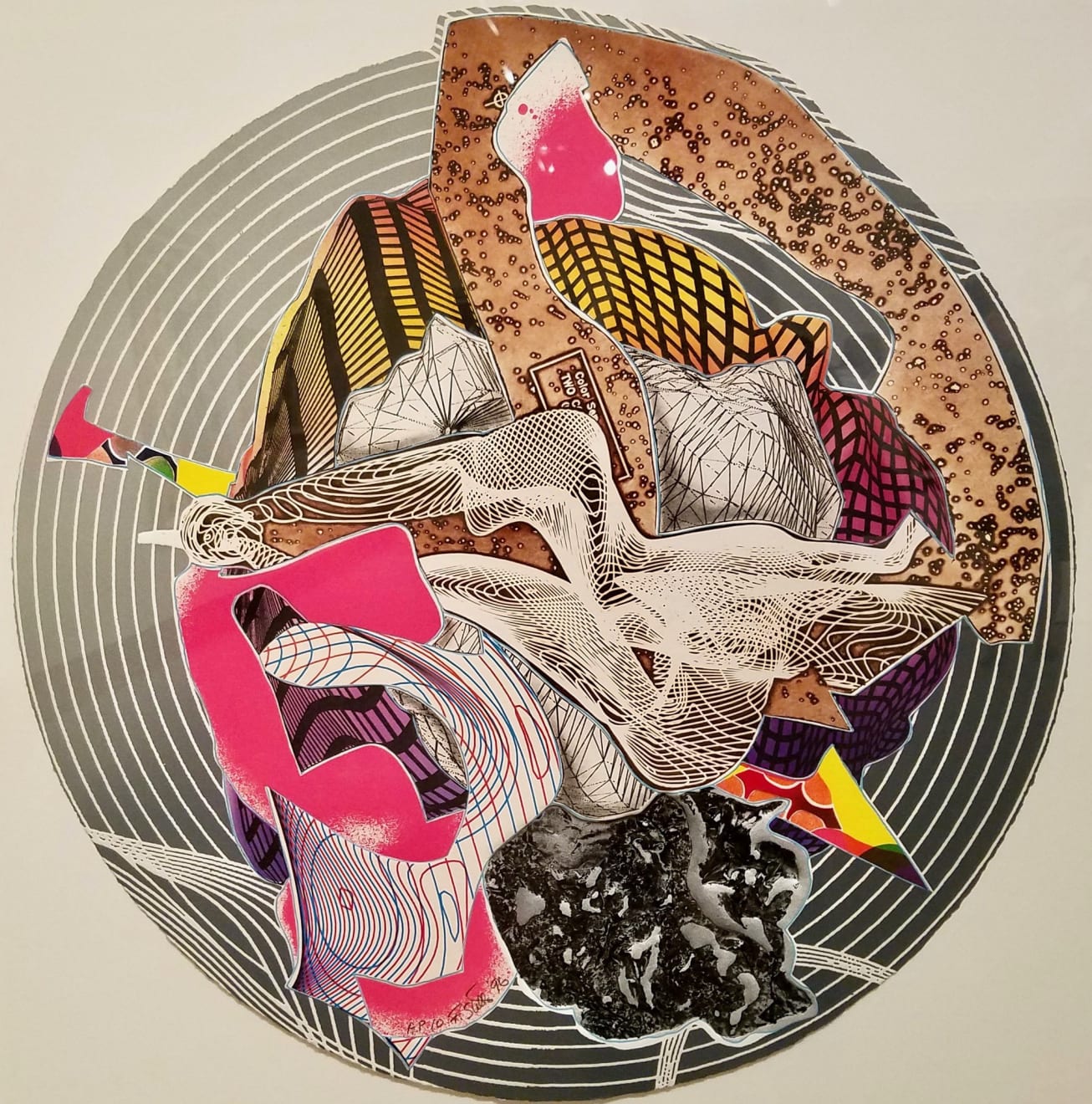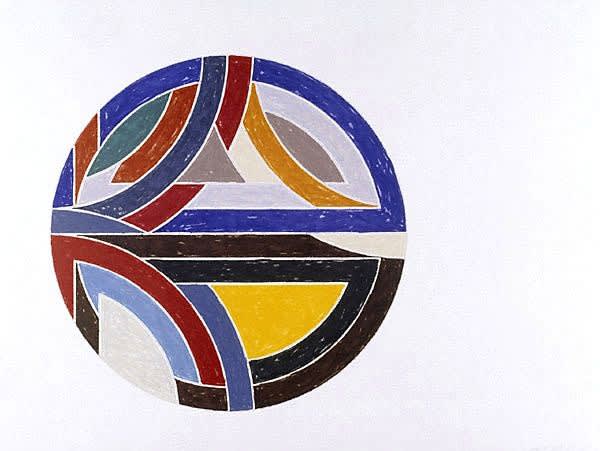Frank Stella changed the art world in so many ways. His Black Painting series launched the minimalism movement in the mid-twentieth century and his collaboration with printmaker Ken Tyler pushed the envelope and changed the way artists create, and the public views, fine art prints.
The Evolution of Frank Stella Prints
Frank Stella began creating prints in earnest at Ken Tyler’s workshop in Los Angeles in 1967. When Tyler opened Tyler Graphics, Limited in New York, the two men began a collaboration that continued until Tyler closed up shop in 2000. Until the 1980s, Stella’s medium of choice was lithography. Tyler and Stella began to incorporate collage, paint, linocut and marbling on handmade paper to create prints that had a quality and texture that had never before been seen in prints.
They continued to push the envelope, doing relief printing with aluminum and magnesium plates for etching and building up the surfaces with plywood block prints. They would often do more than 100 runs of sequences for each print. As their process evolved, so did the images. Stella’s prints are a far cry from his first Black Paintings. His work has evolved from flat black surfaces, to works of great color and texture and expansive sculptures.
An exhibit of some of Frank Stella’s finest print series is currently on display at the Princeton University Art Museum. Frank Stella Unbound, Literature and Printmaking consists of four sets of huge prints, all done between 1984 and 1999. Each series was inspired by a work of literature, like Herman Melville’s Moby Dick and Italo Calvino’s Folk Tales. The Princeton exhibit is on view through September 23, 2018.
The Death of Frank Stella’s Early Champion
Art dealer Lawrence Rubin died on August 16 at his home in Zurich at age 85. Rubin was born in Brooklyn and raised in the Bronx. He studied art history at Brown University, Columbia and at the Sorbonne in Paris. Rubin opened the Galerie Lawrence in Paris in 1961. He gave Frank Stella his first solo show in Europe and the two became close friends, even owning a country house together at one time.
Rubin exhibited Frank Stella’s Polish Village series in 1971, one of the most memorable exhibits for each of them. It was a success for Rubin and the start of a new chapter in Stella’s career.
The Polish Village series was based on 1979 book called Wooden Synagogues, which was given to Stella by architect Richard Meier. The book contains pictures of geometric wooden buildings that were damaged during the Second World War. The images inspired Stella to create more than 100 works made of paper, felt and canvas.
In a 2016 lecture in Havana, Stella said that there were two things that he found compelling about the Wooden Synagogues:
One was that there was a kind of geometry in the construction, the wooden construction, which I would call interlocking-ness: interlocking parts that are interesting as a kind of geometry.
The other thing that was compelling was that the trace of the destruction of these synagogues was from Berlin to Warsaw to Moscow. The development of abstraction in the twentieth century traces that same path, from Moscow to Warsaw to Berlin and back.”
Frank Stella Prints at Vertu Fine Art
Please contact us if you would like more information about the Frank Stella fine art prints available at Vertu Fine Art .
Roberta Smith. Lawrence Rubin, Art Dealer and Supporter of Frank Stella, Dies at 85 The New York Times. August 31, 2018.
PHAIDON Understanding Stella: The Polish Village series February 2018.
Thomas Hine Frank Stella prints at Princeton: Dazzling technique in search of a story The Philadelphia Inquirer August 29, 2018.




![Frank Stella The Broken Jug. A Comedy [D#3] (left handed version), 2007 Marine ply and pine 15x17x12 feet © 2018 Frank Stella / Artists Rights Society (ARS), New York. Courtesy the artist’s studio.](https://artlogic-res.cloudinary.com/w_1800,h_1320,c_limit,f_auto,fl_lossy,q_auto/ws-artlogicwebsite1062/usr/library/images/main/news/43/c08e810e-2e8d-4da7-9fbd-520c99007bee_750_469.jpg)


